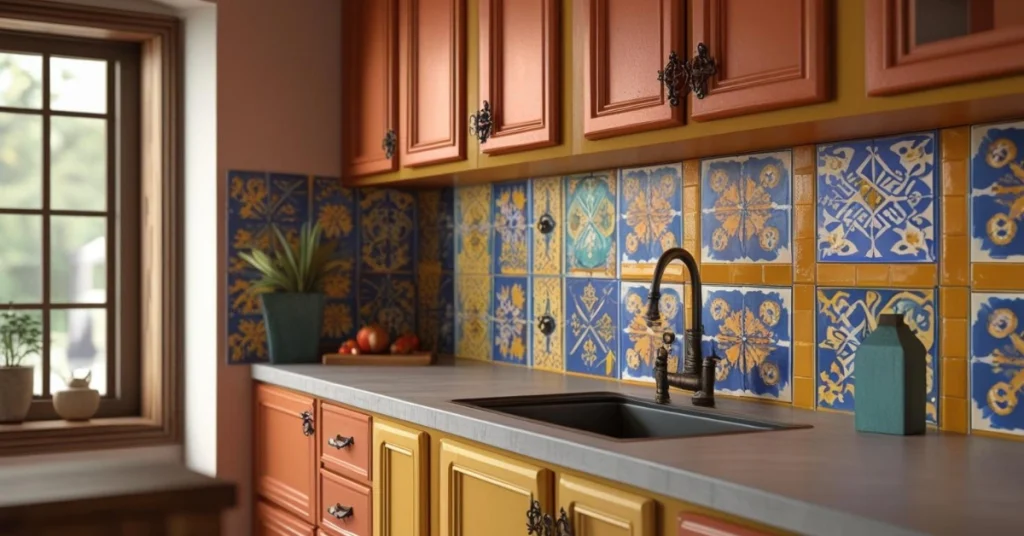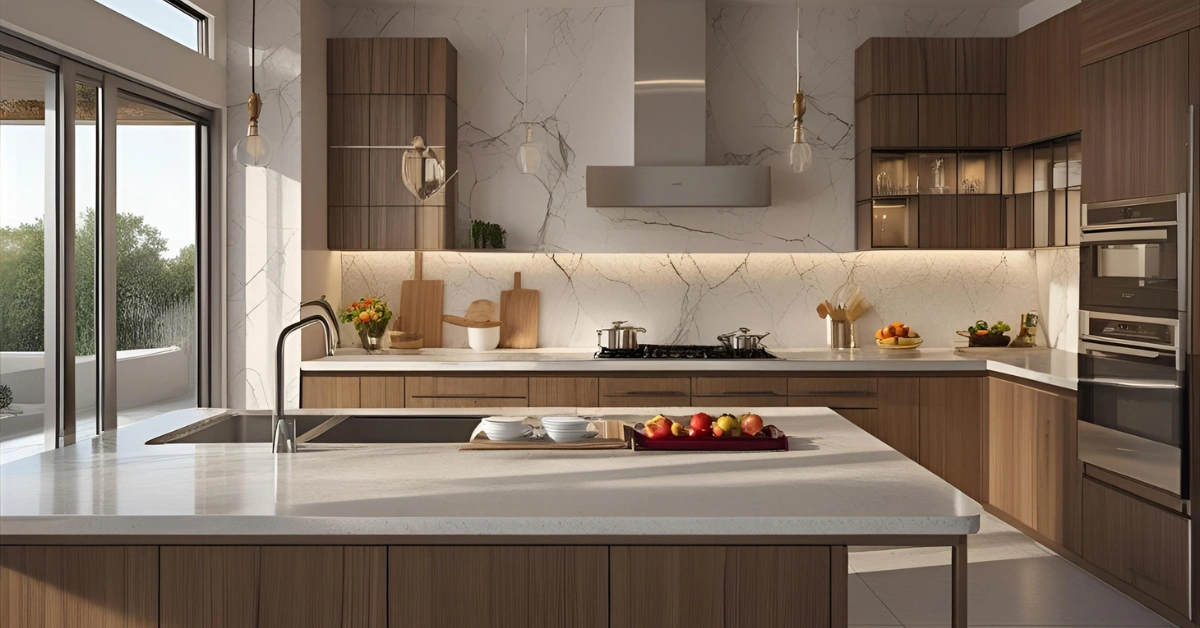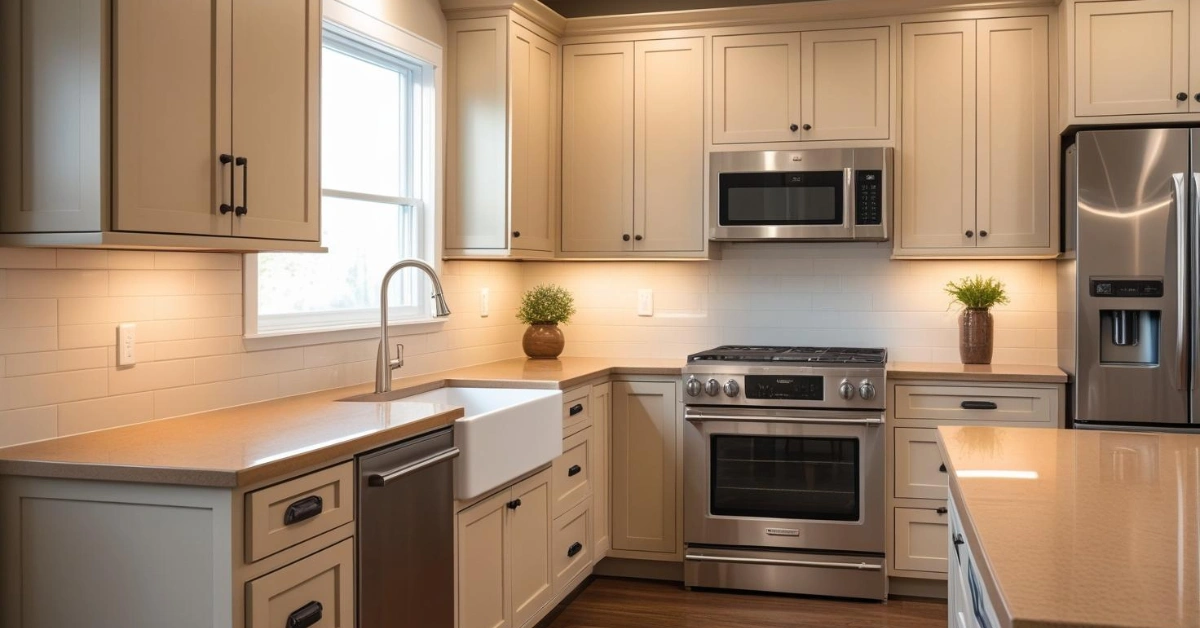Spanish Kitchen Designs: 15 Stunning Ideas

Are you struggling to find a kitchen style that blends warmth, character, and functionality? Many homeowners feel overwhelmed by modern, sterile designs that lack personality or overly complex layouts that sacrifice usability. Spanish kitchen designs offer a refreshing solution, combining rustic charm, vibrant colors, and practical layouts to create a space that feels both inviting and timeless. In this guide, we’ll explore the essence of Spanish kitchen designs, share actionable tips, and provide inspiring ideas to help you craft a kitchen that’s both beautiful and functional.
What Are Spanish Kitchen Designs?
Spanish kitchen designs draw inspiration from Spain’s rich cultural heritage, blending Mediterranean, Moorish, and rustic influences. These kitchens are known for their warm tones, textured surfaces, and handcrafted details, creating a cozy yet sophisticated atmosphere. According to the National Kitchen and Bath Association, Spanish-style kitchens have seen a 12% rise in popularity in 2025 due to their ability to merge tradition with modern functionality.

Key Characteristics of Spanish Kitchens
- Warm Color Palettes: Think terracotta, ochre, and deep blues inspired by Spain’s landscapes.
- Natural Materials: Wood, stone, and wrought iron dominate, adding authenticity.
- Handcrafted Details: Intricate tiles, carved wood, and artisanal hardware create a bespoke feel.
- Open, Inviting Layouts: Spanish kitchens prioritize communal spaces for family and friends.
The History Behind Spanish Kitchen Designs
Spanish kitchen designs trace their roots to the Mediterranean Revival movement of the early 20th century, influenced by Spain’s colonial architecture and Moorish aesthetics. According to Architectural Digest, elements like arched doorways and colorful tiles stem from centuries-old Spanish haciendas. These kitchens were designed as the heart of the home, where families gathered to cook and socialize.
“Spanish kitchens are about storytelling through design. Every tile and texture carries a piece of history.”
— Maria Lopez, Interior Designer, Barcelona Design Studio

Why Choose a Spanish Kitchen Design?
Spanish kitchen designs stand out for their ability to balance aesthetics and functionality. Here’s why they’re a top choice for homeowners in 2025:
- Timeless Appeal: Their classic elements resist fleeting trends, ensuring longevity.
- Warm Ambiance: Earthy tones and natural materials create a welcoming vibe.
- Versatility: They suit various home styles, from modern to rustic.
- Increased Home Value: A well-designed kitchen can boost property value by up to 7%, per Realtor.com.

Core Elements of Spanish Kitchen Designs
To create an authentic Spanish kitchen, focus on these foundational elements. Each adds character while maintaining practicality.
1. Vibrant and Textured Tiles
Hand-painted ceramic tiles, known as azulejos, are a hallmark of Spanish kitchens. These tiles often feature geometric patterns or floral motifs in bold colors like blue, yellow, and green.
- Practical Tip: Use tiles for backsplashes or as accents on countertops. Opt for durable porcelain for high-traffic areas.
- Design Example: A backsplash with blue-and-white Talavera tiles can add a pop of color without overwhelming the space.

2. Rustic Wood Accents
Wooden beams, cabinets, and furniture bring warmth to Spanish kitchens. Opt for distressed or reclaimed wood for an authentic look.
- Practical Tip: Pair dark wood cabinets with lighter countertops to avoid a heavy feel.
- Real-World Example: In a recent project in Santa Fe, a homeowner used reclaimed oak beams to create a rustic yet elegant ceiling feature.

3. Wrought Iron Details
Wrought iron chandeliers, cabinet handles, and pot racks add a touch of old-world charm.
- Practical Tip: Choose matte black or bronze finishes for a cohesive look.
- Design Example: A wrought iron chandelier with candle-style lights can serve as a stunning focal point above an island.

4. Warm Color Schemes
Spanish kitchens embrace earthy tones like terracotta, mustard yellow, and olive green, often paired with neutral whites or creams.
- Practical Tip: Use accent colors sparingly on walls or accessories to avoid overwhelming the space.
- Designer Insight: “Balance bold colors with neutral bases to keep the kitchen airy,” says Elena Garcia, a Seville-based designer.

5. Arched Features
Arched doorways, windows, or alcoves are iconic in Spanish design, adding architectural interest.
- Practical Tip: If structural arches aren’t feasible, mimic the look with curved cabinetry or shelving.
- Design Example: An arched niche for cookware storage can double as a decorative display.

Popular Spanish Kitchen Design Styles
Spanish kitchen designs come in various styles, each with unique flair. Here are three popular approaches:
1. Traditional Spanish Hacienda
This style evokes the charm of rural Spanish estates with heavy wood furniture, terracotta floors, and vibrant tiles.
- Best For: Large kitchens with ample natural light.
- Key Features: Exposed beams, stucco walls, and colorful textiles.
- Example: A hacienda-style kitchen in Tucson used terracotta flooring and hand-painted sink basins for authenticity.

2. Modern Spanish Revival
This contemporary take blends sleek lines with traditional elements, ideal for urban homes.
- Best For: Smaller spaces or modern homes.
- Key Features: Minimalist cabinetry, neutral tones, and subtle tile accents.
- Example: A Los Angeles condo featured white cabinetry with blue azulejos for a fresh yet classic look.

3. Mediterranean Coastal
Inspired by Spain’s coastal regions, this style incorporates lighter colors and breezy textures.
- Best For: Homes in warm climates.
- Key Features: Whitewashed walls, natural wood, and blue accents.
- Example: A Miami beach house used driftwood shelves and turquoise tiles to capture a coastal Spanish vibe.

How to Incorporate Spanish Kitchen Designs in Your Home
Ready to transform your kitchen? Follow these steps to bring Spanish charm to your space.
Step 1: Plan Your Layout
Spanish kitchens prioritize open, communal spaces. Consider an island or large dining table to encourage gatherings.
- Tip: Ensure at least 36 inches of clearance around islands for easy movement.
- Example: A family in Austin added a central island with bar stools to create a social hub.

Step 2: Choose Your Materials
Opt for natural materials like stone countertops, wooden cabinets, and ceramic tiles.
- Tip: Quartz countertops mimicking natural stone are low-maintenance and durable.
- Source: Houzz reports a 15% increase in demand for stone countertops in 2025.

Step 3: Add Authentic Details
Incorporate handcrafted elements like azulejos, wrought iron, or pottery.
- Tip: Visit local artisans or online marketplaces like Etsy for unique pieces.
- Example: A homeowner in San Diego sourced hand-painted tiles from a local ceramicist for a custom backsplash.

Step 4: Balance Lighting
Combine natural light with warm fixtures like wrought iron chandeliers or pendant lights.
- Tip: Use dimmable lights to create a cozy ambiance for evening gatherings.
- Designer Quote: “Lighting sets the mood. Warm tones make Spanish kitchens feel alive,” notes Carlos Mendoza, a Madrid-based designer.

Step 5: Personalize with Accessories
Add textiles, pottery, or plants to enhance the lived-in feel.
- Tip: Use woven rugs or clay pots for authentic Spanish flair.
- Example: A Chicago couple displayed vintage Spanish cookware on open shelves for a personal touch.

Spanish Kitchen Design Ideas for Every Budget
You don’t need a massive budget to achieve a Spanish-inspired kitchen. Here are ideas for different price points:
Low Budget ($500–$2,000)
- Paint cabinets in warm tones like terracotta or mustard.
- Add a DIY tile backsplash using peel-and-stick azulejos.
- Install wrought iron cabinet knobs for a quick upgrade.

Mid-Range Budget ($2,000–$10,000)
- Replace countertops with quartz or granite in earthy tones.
- Add a small island with reclaimed wood accents.
- Install a statement chandelier or pendant lights.

High-End Budget ($10,000+)
- Custom-build arched niches or doorways.
- Invest in handcrafted tiles from Spanish artisans.
- Install exposed wooden beams for a dramatic effect.

Common Mistakes to Avoid in Spanish Kitchen Designs
Even the best intentions can lead to design missteps. Here’s what to watch out for:
- Overloading with Colors: Too many bold hues can make the space feel chaotic. Stick to 2–3 accent colors.
- Ignoring Functionality: Prioritize storage and workflow to ensure the kitchen is practical.
- Overdoing Ornate Details: Balance intricate tiles or fixtures with simpler elements to avoid clutter.
- Poor Lighting Choices: Avoid harsh fluorescent lights; opt for warm, layered lighting.
Maintaining Your Spanish Kitchen Design
To keep your kitchen looking timeless, follow these maintenance tips:
- Clean Tiles Regularly: Use a mild detergent to preserve hand-painted designs.
- Seal Stone Countertops: Apply sealant every 1–2 years to prevent stains.
- Polish Wrought Iron: Use a dry cloth to maintain shine and prevent rust.
- Refresh Textiles: Swap out rugs or curtains seasonally for a fresh look.

Spanish Kitchen Designs vs. Other Styles
How do Spanish kitchens compare to other popular styles? Here’s a quick breakdown:
| Style | Key Features | Best For |
|---|---|---|
| Spanish Kitchen | Warm tones, tiles, wrought iron | Cozy, character-driven homes |
| Modern Farmhouse | Neutral palette, shiplap, open shelves | Minimalist, rustic enthusiasts |
| Industrial | Metal, concrete, exposed pipes | Urban lofts, edgy aesthetics |
| Scandinavian | White, wood, clean lines | Small spaces, airy designs |
Spanish kitchens stand out for their warmth and cultural depth, making them ideal for those seeking a unique, inviting space.
Real-World Inspiration: A Spanish Kitchen Success Story
In 2024, a couple in Phoenix transformed their outdated kitchen into a Spanish masterpiece. They used terracotta floor tiles, white stucco walls, and a custom island with a reclaimed wood top. Hand-painted azulejos formed a vibrant backsplash, while wrought iron pendant lights added elegance. The result? A kitchen that felt like a Mediterranean retreat, perfect for hosting family dinners.
“Our kitchen went from bland to breathtaking. The Spanish style made it feel like home.”
— Sarah and Miguel, Phoenix Homeowners

Conclusion: Bring Spanish Kitchen Designs to Life
Spanish kitchen designs offer a perfect blend of warmth, character, and functionality, making them an ideal choice for homeowners seeking a timeless yet vibrant space. By incorporating elements like hand-painted tiles, rustic wood, and wrought iron, you can create a kitchen that’s both beautiful and practical. Whether you’re working with a modest budget or a high-end vision, these designs provide endless inspiration. Ready to transform your kitchen? Start planning your Spanish-inspired space today and bring a touch of Mediterranean charm to your home!
Share your favorite Spanish kitchen design ideas in the comments or consult a local designer to start your project. Let’s create a space that inspires joy and connection!






